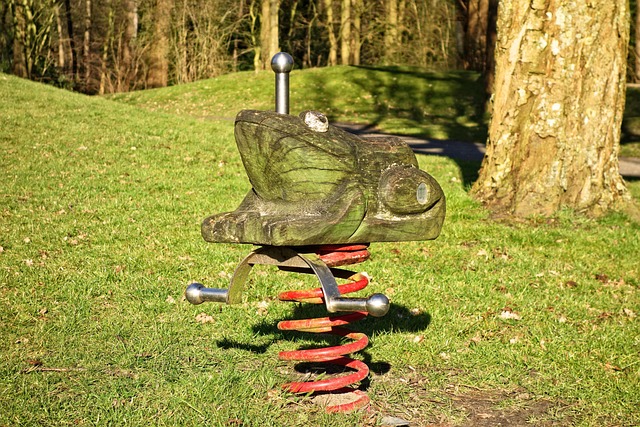Selecting Safe, Inclusive Playground Equipment for Children
Transform a yard, schoolyard, or park into a safer, more engaging play space by choosing playground equipment that balances safety, longevity, and accessibility. This guide covers what to look for in swings, slides, climbing structures, surfacing, and upkeep so caregivers and planners can make informed, inclusive decisions.

Playground safety essentials: What to prioritize
When choosing playground equipment, focus first on features that reduce the likelihood of falls and entrapment. Look for components with smooth, rounded edges, secure guardrails on raised platforms, and openings sized to prevent head entrapment. Fasteners should sit flush with surfaces and be corrosion-resistant; avoid designs with pinch points or materials that can splinter or degrade quickly. Equipment that meets recognized safety standards usually includes clear age recommendations and installation guidance.
Surface materials are a key safety element. Use impact-absorbing surfacing such as engineered wood fiber, rubber mulch, poured-in-place rubber, or interlocking safety tiles. Select the type and depth that correspond to the equipment’s maximum fall height to reduce injury severity. Finally, set up a schedule of routine inspections to look for worn pieces, loose bolts, rust, exposed concrete footings, or other deterioration that could shorten service life or cause accidents.
Choosing swings: styles and spacing
Swings teach rhythm, balance, and social sharing, but they require appropriate selection and ample clearance. For toddlers, choose bucket or harness-style seats that prevent slipping and support small bodies. Older children benefit from flat or belt seats. Ensure swing bays provide sufficient front and rear swing space and that seats are attached using durable, flexible chains or ropes with protective sleeves to prevent pinching.
Materials that resist UV damage and corrosion, like UV-stable plastics and powder-coated metals, extend outdoor life. Include inclusive options such as high-back adaptive seats or wheelchair-accessible swing platforms so children of differing abilities can participate. Post clear safety rules (for example, no standing on seats and one child per seat) and maintain unobstructed sightlines for supervising adults.
Slides: material choices, slope, and safe exits
Slides differ in material, height, and steepness, so match the model to the users’ ages. High-density polyethylene (HDPE) resists fading and stays cooler in sunlight, while powder-coated steel is durable but may heat up on hot days. Taller, steeper slides suit older children and should have transfer platforms and side rails to assist safe entry.
Check the transition at the slide’s end: a flat run-out or a short exit platform helps riders slow down onto cushioned surfacing. Never place slides so they end on hard surfaces or in deep mulch without an appropriate impact layer. Inspect slides regularly for cracks, sharp edges, or excessive surface heat to prevent common injuries.
Climbing structures: matching challenge to development
Climbing features build strength, coordination, and problem-solving skills, but complexity must suit children’s developmental levels. For preschoolers, opt for low platforms, gentle climbing walls with oversized grips, and short rockers. Older children can handle elevated towers, rope nets, and more elaborate obstacles.
Always verify the maximum fall height and make sure surfacing depth matches that height. Provide a variety of components—horizontal ladders, cargo nets, and bouldering elements keep play stimulating and cater to different skill sets. Install barriers or guardrails on raised platforms and design multiple, clear exit routes so children can descend safely. Check grips, connectors, ropes, and bolts often; common issues include worn ropes, loose fasteners, and frayed elements that need prompt repair.
Designing for accessibility and inclusive play
Inclusive playgrounds let children of varying abilities play together. Incorporate ground-level activities such as sensory panels, musical instruments, and interactive features so children who use mobility aids can participate. Consider ramps, transfer stations, and wider platforms to enable access to elevated areas when feasible. Accessible swings and seating areas close to play elements help caregivers assist and supervise.
Think beyond equipment: sightlines, shaded zones, hydration access, and nearby seating make play more comfortable for children with different endurance or sensory needs. Choose pieces that encourage cooperative play, group interaction, and parallel play spaces to support social development.
Maintenance, standards, and long-term planning
A safe, lasting play area results from the right combination of materials, proper installation, and consistent upkeep. Follow national safety standards and local installation rules, and work with certified installers when needed. Establish routine inspections and maintenance to catch rust, loose bolts, exposed footings, or surfacing compaction before they become hazards.
Conclusion
Picking playground equipment means balancing safety, durability, and play value. Evaluate materials, appropriate surfacing matched to fall heights, and age-appropriate designs for swings, slides, and climbing elements. Prioritize inclusive features so a broader range of children can join in, and commit to regular inspection and maintenance. With careful planning and adherence to safety guidelines, you can create an enjoyable, resilient play space that supports healthy development for years.






